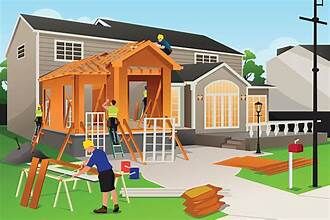
In today’s changing world, interior design plays a crucial role in home renovations. Gone are the days when homeowners solely relied on their creativity and DIY solutions. With a wealth of inspiration sources and a wide range of products at their disposal, consumers now turn to designers for their expertise in creating practical living spaces. Over time, the role of designers has significantly evolved to adapt to advancements and shifting consumer preferences.
I. From Decorators to Partners: The Evolution of Interior Designers
Previously seen as decorators, interior designers have transitioned into valued partners in the process of revamping homes. While they still have an eye for aesthetics, their responsibilities extend beyond selecting furniture and coordinating color palettes. Modern interior designers focus on understanding clients' requirements, lifestyle choices, and budget constraints to craft a personalized shopping experience and solutions that reflect their vision. If you are interested in home makeovers, you can contact Katherine Mueller Design or other reputed firms for consultation.
II. Embracing Technology: The Digital Revolution in Interior Design
Technological progress has transformed aspects of our lives – including the field of design. From virtual room design tools to 3D visualizations, technology has unlocked possibilities for both designers and homeowners:
a) Virtual Room Design Tools: Thanks to the availability of platforms that provide virtual room design tools, individuals now have the opportunity to experiment with layouts, colors, and furniture arrangements without physically rearranging anything. This allows homeowners to envision their desired outcomes before committing to any changes.
b) Renderings: Another significant advancement in the field is the use of three renderings that allow interior designers to create realistic visual representations of a space prior to any construction or renovation work. This not only helps clients better understand the result but also facilitates smooth collaboration between designer and client throughout the entire process.

c) Augmented Reality (AR) Shopping Apps: Augmented Reality technology has revolutionized the way people shop for their homes. AR apps allow users to visualize how furniture and decor items will look in their actual space before making a purchase. By using their smartphones or tablets, individuals can see a 3D model of the product overlaid onto their room's live camera feed.
III. Sustainability Matters: Embracing an Eco-Friendly Approach
In recent times, there has been a shift towards sustainability and environmentally conscious design practices. Clients are becoming more mindful of their impact and are seeking ways to incorporate sustainable elements into their living spaces. Interior designers have responded by incorporating eco-friendly materials, energy-efficient solutions, and sustainable design principles into their projects.
Furthermore, contemporary interior designers promote repurposing existing furniture pieces or supporting artisans to reduce the waste associated with fast furniture consumption. This approach allows clients to create spaces that not only exude beauty but also reflect their commitment to living.
IV. Designing for Well-being: The Importance of Creating Spaces that Promote Mental Health
In our fast-paced world, our homes have evolved into havens where we find peace and rejuvenation amidst the hustle and bustle of daily life. This shift has led designers to embrace a role in crafting environments that nurture mental wellness and boost overall health.
By focusing on elements like lighting, airflow, sound quality, and ergonomic design – all of which significantly impact the ambiance of a space – designers can cultivate a relationship between residents and their surroundings. Design decisions such as selecting calming hues, integrating elements, and establishing relaxation zones all play a part in cultivating an atmosphere within the home.
V. A Collaborative Approach: Partnering Closely with Homeowners

The evolving role of designers is marked by a collaborative spirit when working alongside homeowners. Instead of imposing their style on projects, designers now prioritize understanding clients' lifestyles and preferences on a deeper level. By engaging homeowners in every stage of the decision-making process – from ideation to final implementation – they ensure that the end product not only looks visually appealing but also functions well and caters to requirements.
The development of the interior designer position mirrors shifts towards mindful consumption and improved living experiences in our homes. With homeowners increasingly turning to experts for help in crafting retreats. Incorporating technologies, supporting sustainability initiatives, placing emphasis on mental wellness, and fostering collaboration. Contemporary interior designers' responsibilities will progress, enhancing and reshaping our living spaces for the better.




(0) comments
We welcome your comments
Log In
Post a comment as Guest
Keep it Clean. Please avoid obscene, vulgar, lewd, racist or sexually-oriented language.
PLEASE TURN OFF YOUR CAPS LOCK.
Don't Threaten. Threats of harming another person will not be tolerated.
Be Truthful. Don't knowingly lie about anyone or anything.
Be Nice. No racism, sexism or any sort of -ism that is degrading to another person.
Be Proactive. Use the 'Report' link on each comment to let us know of abusive posts.
Share with Us. We'd love to hear eyewitness accounts, the history behind an article.